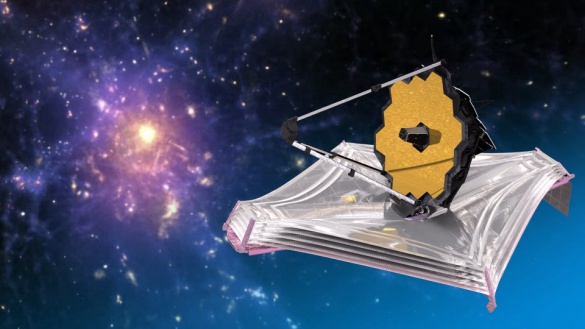JAMES WEBB SPACE TELESCOPE

Disclaimer: Copyright infringement not intended.
Context
• World’s largest and most powerful space telescope has been launched successfully into orbit to make breakthrough discoveries on the origins of the Universe and Earth-like planets beyond our solar system.
About
• The James Webb Space Telescope (JWST or "Webb") is a joint NASA–ESA–CSA space telescope that will succeed Hubble Space Telescope as NASA's flagship astrophysics mission.
• The new observatory is, however, 100 times more powerful.
• JWST will study various phases in the history of the universe, from the formation of solar systems to the evolution of our own Solar System.
• The telescope must be kept very cold in order to observe in the infrared without interference, so it will be deployed in space near the Sun–Earth L2 Lagrange point.
• And Webb's special orbital path will keep it in constant alignment with the Earth as the planet and telescope circle the sun in tandem.
• Also a large sunshield made of silicon-coated and aluminium-coated Kapton will keep its mirror and instruments below 50 K (−223.2 °C).
Note
• A Lagrange point is a location in space where the combined gravitational forces of two large bodies, such as Earth and the sun or Earth and the moon, equal the centrifugal force felt by a much smaller third body.
• The interaction of the forces creates a point of equilibrium where a spacecraft may be "parked" without coming in the influence of gravitational field of any other body (example Earth or Sun).
Significance
• It will see farther into our origins, from the formation of stars and planets, to the birth of the first galaxies in the early Universe.
• It intends to show humans what the Universe looked like even closer to its birth nearly 14 billion years ago.
To know more about Lagrange Points visit: https://www.iasgyan.in/blogs/types-of-orbits-explained
https://newsonair.gov.in/News?title=NASA-launches-world%e2%80%99s-most-powerful-space-telescope-to-scour-universe-for-hints-of-life&id=432201



1.png)
